Intel 32nm Westmere Desktop Processor Roadmap Exposed
Intel 32nm Westmere Processors
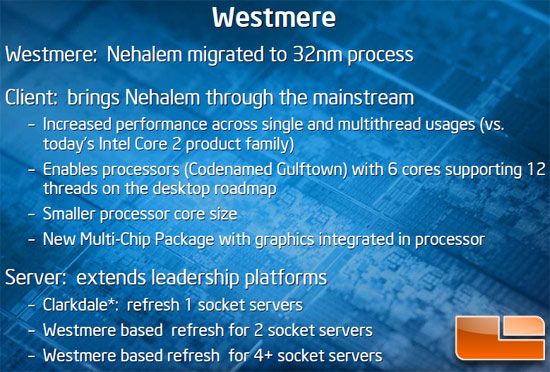
Westmere is basically Nehlaem built on a smaller manufacturing process. This means that Westmere is more power efficient and more cost effective since Intel can produce more cores per wafer. The 32nm Westmere core will also power the upcoming Gulftown processor that has 6 cores and 12 threads that will be aimed at the enthusiast market near the end of 2009. Westmere also brings to market for the very first time a new multi-chip package with an integrated graphics processor located on the processor itself.
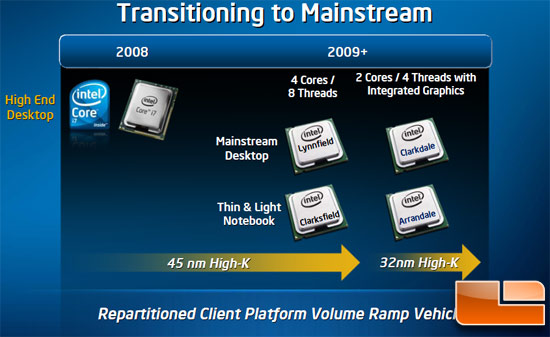
The goal for 2009 is to bring Nehalem technology to the mainstream. This will be done in two phases: the launch of 45nm processors with 4 cores and 8 threads called Lynnfield and Clarksfield and then the launch of 32nm 2 core and 4 thread processors named Clarkdale and Arrandale.
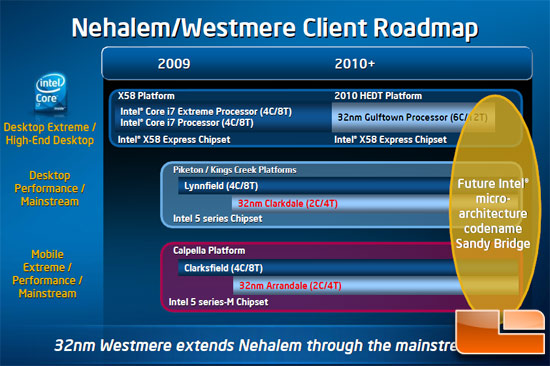
First generation 32nm products will be aimed at desktop and mobile users in the mainstream market during the fourth quarter of 2009. Desktop users will see the launch of Piketon and Kings Creek platforms utilizing a new Intel 5 series chipset and socket with Lynnfield or Clarkdale processors. Both of these desktop processors will need the new Intel socket LGA 1156 and one of the upcoming 5-series chipsets (P55, P57) in order to run. The Intel Lynnfield processor is a 32nm processor that has four cores and eight threads. A little later in the year Intel will launch the 32nm Clarkdale and Arrandale processors with two cores and four threads that also feature integrated graphics. Intel does not have a quad-core 32nm processor on the roadmap, which is very interesting. The high end Intel X58 Express platform will also feature an update later in the year with the launch of a processor that has six cores and twelve threads!
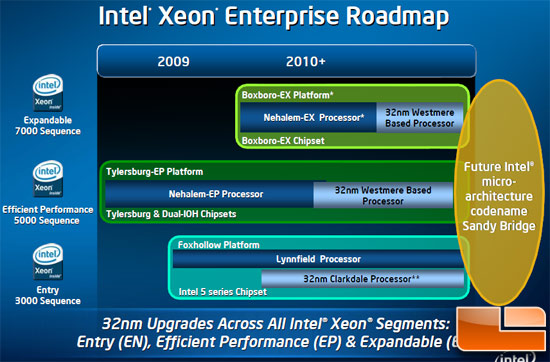
On the server side of the market Intel is introducing 32nm Xeon processors on the entry level clients and then ramping up to the high-end clients as time goes on. On the entry level single socket server side, a platform called Foxhollow will bring the Lynnfield processor (designed off Nehalem) into the entry-level single-socket arena, to be followed later by the 32nm Clarkdale product. For dual-socket servers, the Nehalem Efficient Performance (EP) processor is expected in Q1 2009 will be refreshed next year with a future 32nm Westmere-based product, as will the Nehalem EX for four-socket systems. The Expandable server market should see the Nehalem-EX processors followed by 32nm Westmere based processors near the end of the year.
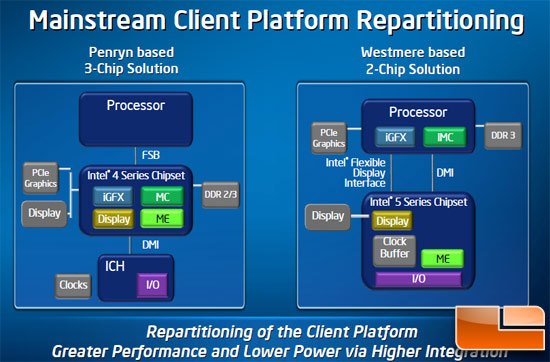
The new 32nm Westmere based platform features a two chip solution with just the processor and an Intel 5 series chipset. By doing this, Intel has eliminated the need for an ICH, which reduces manufacturing costs and valuable space on the motherboard.
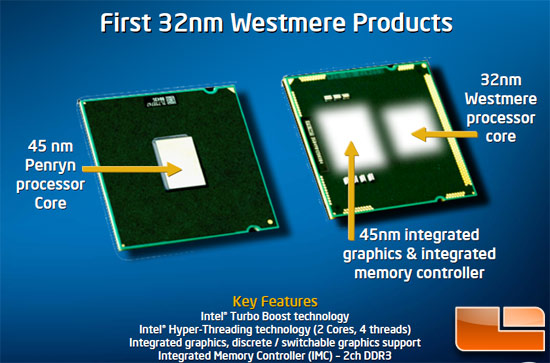
The first Intel 32nm Westmere products will feature both a processor core and an integrated graphics & integrated memory controller on a single processor. What makes this design so interesting is that the processor core is 32nm, and that the memory controller and integrated memory controller are on a separate 45nm die. Intel has perfected the 45nm process; since they have been doing it so long they have made the gates inside the processor perform better. Since the integrated graphics and memory controller is located on a separate die it is rumored that you can adjust the power settings and clock frequencies better than on one die. Intel took their current 65nm integrated graphics technology and shrunk it down to 45nm and added all the performance tweaks.
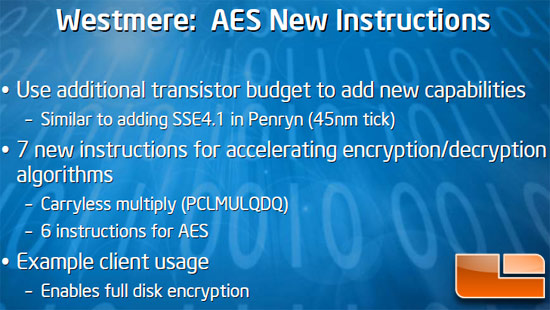
The 32nm Westmere processors also offer new Advanced Encryption Standard (AES) instructions. Early Intel Analysis shows significant Speedup on encryption and decryption algorithms. Intel sees that full disk encryption is an important feature and that the new instruction set only makes sense for what the market demands.
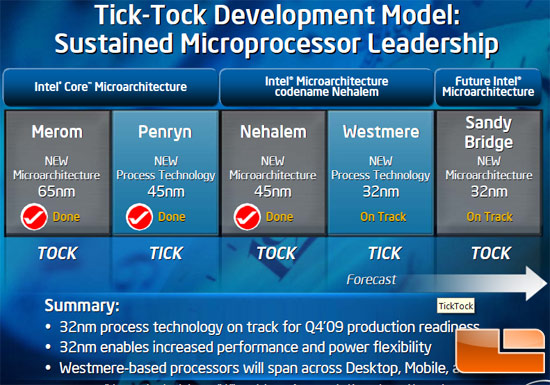
Intel’s tick-tock model has successfully delivered the next-generation of silicon technology and new microprocessor architecture year after year. Even with the economy slowing, the Intel tick-tock model has not been impacted as it is planned 3-4 years ahead. The next major change will come with the next tock, which is a whole new microarchitecture with Sandy Bridge. The move to 32nm Westmere is really just a minor process technology change on the processor side of things. What Westmere means for mainstream consumers is that the long lived socket LGA 775 is seeing its replacement for the very first time. It is hard to believe that LGA 775 platforms have been around since 2004 and lasted to this point, but it will soon be replaced with the new socket LGA 1156, along with the upcoming 5-series of chipsets (P55, P57).

Comments are closed.